
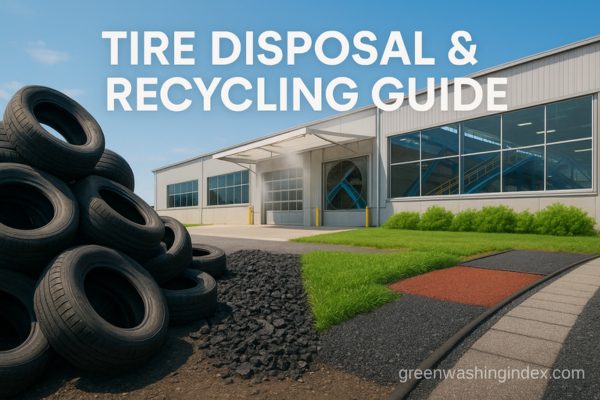
Every year, Americans dispose of a staggering 280 million tires, creating mountains of rubber that threaten our environment and public health. If you’re wondering how to get rid of old tires responsibly, you’re not alone—millions face this challenge when replacing worn treads.
The good news? Multiple eco-friendly tire disposal methods exist, from retailer take-back programs to specialized recycling facilities that transform old rubber into valuable resources. Proper disposal prevents toxic chemicals from contaminating soil and water while reducing fire hazards and disease-carrying pest habitats.
This comprehensive guide reveals everything about tire disposal and recycling, including state regulations, step-by-step disposal methods, environmental impacts, and innovative recycling solutions. You’ll discover how to dispose of tires in your area, understand the true cost of disposal, and learn how recycled tires become playground surfaces, road materials, and energy sources.
The consequences of improper tire disposal extend far beyond cluttered landscapes. When tires end up in unauthorized locations, they create serious environmental and health hazards that affect entire communities.
Understanding these impacts motivates responsible disposal behavior and highlights why every tire matters in the fight against pollution.
Tires pose unique challenges in landfills due to their 75% void space, which traps methane gases and causes them to bubble upward. This “floating” effect can damage landfill liners designed to prevent contaminants from reaching groundwater supplies.
Chemical leaching presents another serious concern. According to the California Integrated Waste Management Board, discarded tires contain carcinogenic and mutagenic compounds that slowly seep into surrounding soil. These toxins persist long after the tire is moved, creating lasting environmental damage.
Fire hazards from tire stockpiles create catastrophic pollution events. The infamous 1999 Westley, California tire fire involved 7 million scrap tires and burned for five weeks, spreading toxic smoke up to 100 kilometers away. Such disasters release harmful pollutants including sulfur dioxide and carbon monoxide into the atmosphere.
Space consumption in landfills represents a growing crisis. With tires taking hundreds of years to decompose, they consume valuable landfill capacity that could serve other waste streams more effectively.
Stockpiled tires become breeding grounds for disease-carrying mosquitoes, particularly those spreading West Nile Virus and other vector-borne illnesses. The water collected in tire cavities creates perfect mosquito nurseries that threaten public health.
Tire fires pose immediate dangers to human health through toxic smoke inhalation. These fires are notoriously difficult to extinguish, often requiring specialized foam systems that can contaminate water supplies if not properly managed.
Rodent infestations in tire piles create additional health concerns. These pests carry diseases and often migrate to nearby residential areas when tire dumps grow large enough to support colonies.
Understanding tire disposal regulations helps ensure compliance while avoiding costly fines. The regulatory landscape varies significantly across jurisdictions, making local knowledge essential.
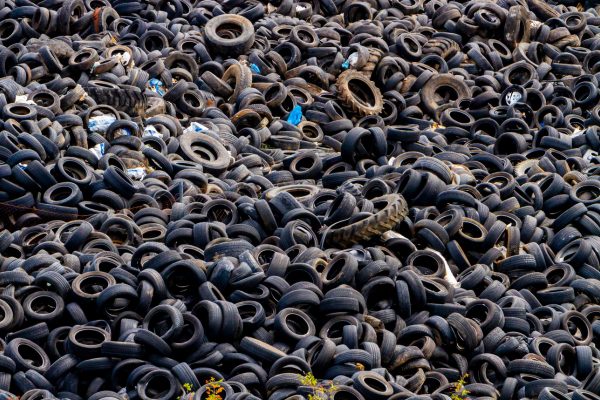
Currently, 42 states prohibit whole tires from entering landfills, reflecting growing environmental awareness. These bans force proper recycling practices and have dramatically reduced tire stockpiles nationwide.
State disposal fees range from $0.25 to over $5 per tire, funding cleanup programs and recycling infrastructure. These fees, typically collected at purchase, ensure sustainable funding for tire management programs.
Common State Regulations Include:
Penalties for illegal dumping vary but often include substantial fines and potential criminal charges. Some states impose fines exceeding $1,000 per tire for unauthorized disposal.
The European Union’s Landfill Directive completely prohibits tire disposal in landfills, setting a global standard for tire management. This comprehensive ban has driven innovation in recycling technologies and alternative uses.
Countries worldwide are adopting similar measures, recognizing that tire waste requires specialized handling. International cooperation through organizations like the World Business Council for Sustainable Development promotes best practices globally.
Finding the right disposal method for your old tires doesn’t have to be complicated. Multiple options exist, each with specific advantages depending on your location and needs.
Most tire retailers offer disposal services when you purchase new tires, making this the most convenient option for many consumers. The disposal fee, typically $2-5 per tire, is often included in your purchase price.
Retailer Disposal Process:
Major chains like Discount Tire, Firestone, and Goodyear maintain partnerships with certified recycling facilities. These relationships ensure your tires enter legitimate recycling streams rather than illegal dumps.
Some retailers accept tires even without new purchases, though fees may be higher. Call ahead to confirm policies and pricing, as these vary by location and current capacity.
Many counties provide designated tire collection sites for residents, often limiting quantities to prevent commercial dumping. These facilities typically accept 4-8 tires per visit without appointment.
Tennessee’s system exemplifies effective municipal programs, with state law requiring at least one collection site per county. Similar programs exist nationwide, funded through tire taxes and environmental fees.
To find your local site, contact your waste management department or visit your state’s environmental agency website. Many maintain online directories with locations, hours, and acceptance criteria.
Companies like Liberty Tire Recycling operate large-scale facilities processing millions of tires annually. These specialists handle everything from passenger car tires to massive mining equipment treads.
What to Expect at Recycling Facilities:
Some facilities offer free disposal days or reduced rates for residents. These events, often called “tire amnesty days,” help communities eliminate stockpiled tires safely.
Understanding how tire recycling works reveals why proper disposal matters. Modern facilities use sophisticated technology to extract maximum value from every tire.
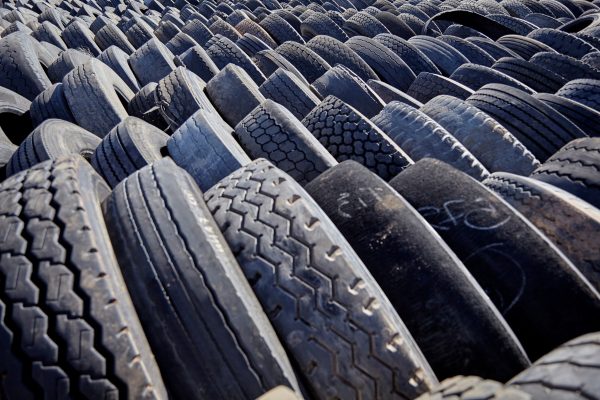
Licensed haulers collect tires from retailers, collection sites, and cleanup projects using specialized equipment. Proper transportation prevents tire loss and ensures regulatory compliance throughout the journey.
Industrial shredders equipped with powerful steel blades reduce whole tires to manageable pieces. Primary shredding creates 2-4 inch chips, while secondary processing produces smaller fragments for specific applications.
This mechanical processing generates significant heat, requiring cooling systems to prevent combustion. Modern facilities use water spray systems and controlled feed rates to maintain safe operating temperatures.
Advanced separation systems divide shredded tires into distinct material streams using multiple technologies:
Separation Methods:
The steel recovered from tires—approximately 15% by weight—goes directly to steel mills for recycling. This high-quality steel requires no additional processing before reuse.
Recycling transforms old tires into valuable commodities serving diverse markets:
Tire-Derived Fuel (TDF): Shredded tires provide high-energy fuel for cement kilns and paper mills. With 25% more energy than coal, TDF offers superior performance while reducing fossil fuel consumption.
Crumb Rubber: Fine rubber particles find applications in athletic surfaces, playground safety surfacing, and rubber-modified asphalt. The consistent quality of crumb rubber makes it ideal for these demanding uses.
Tire-Derived Aggregate (TDA): Larger tire chunks serve civil engineering projects as lightweight fill material. TDA’s properties make it perfect for retaining walls, road embankments, and landfill construction.
The versatility of recycled tire materials continues expanding as technology advances. From highways to playgrounds, recycled tires serve countless applications.
Rubberized asphalt represents one of recycling’s greatest success stories. Adding ground tire rubber to asphalt creates longer-lasting roads with superior noise reduction properties. The EPA recognizes this application as highly beneficial for infrastructure sustainability.
Landfill engineering relies heavily on tire-derived materials. Shredded tires provide excellent drainage layers in leachate collection systems while resisting biological degradation that affects other materials.
Engineering Applications Include:
The transformation of tires into everyday products showcases recycling innovation. Playground surfaces made from recycled tires provide superior safety compared to traditional materials while diverting millions of tires from landfills.
Athletic fields increasingly use crumb rubber infill for artificial turf systems. This application provides consistent playing surfaces while eliminating maintenance requirements of natural grass.
Popular Consumer Products:
Cement kilns utilize whole tires as fuel, taking advantage of their high energy content. The iron in steel belts even benefits cement chemistry, making tires ideal for this application.
Pyrolysis technology converts tires into oil, gas, and carbon black through thermal decomposition. While still developing commercially, this process promises complete material recovery without combustion emissions.
The positive impacts of proper tire recycling extend throughout environmental systems. These benefits justify the effort and expense of comprehensive recycling programs.
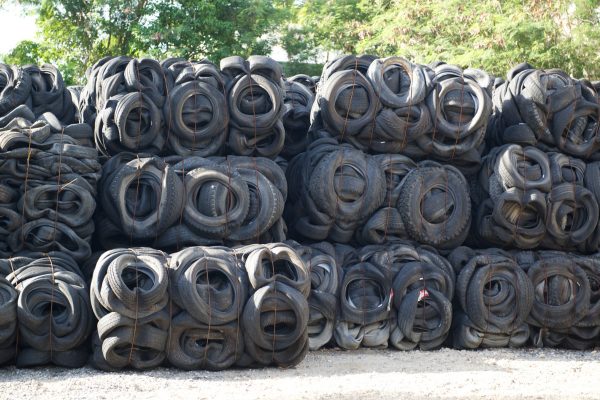
Recycling one million tires recovers approximately 35,000 pounds of copper, 772 pounds of silver, and 75 pounds of gold from steel belting. These materials retain full value through infinite recycling cycles.
Energy savings from recycling are substantial. Processing recycled rubber requires 75% less energy than producing new synthetic rubber, dramatically reducing carbon emissions from manufacturing.
The automotive recycling industry, including tire recycling, prevents 85 million barrels of oil consumption annually. This conservation equals removing millions of vehicles from roads in terms of emissions reduction.
Proper recycling keeps 11 million tons of steel and 800,000 tons of non-ferrous metals from landfills yearly. This diversion prevents soil and water contamination while preserving landfill capacity.
By eliminating tire stockpiles, recycling prevents mosquito breeding habitats and reduces disease transmission risks. Communities with active recycling programs report fewer vector-borne illness cases.
Air quality improves dramatically when tires enter controlled recycling instead of open burning. Scientific studies confirm significant pollution reduction in areas with strong recycling programs.
Manufacturing products from recycled tire materials generates far fewer greenhouse gases than virgin material production. This reduction helps companies meet sustainability goals while reducing costs.
The circular economy model embodied by tire recycling demonstrates how waste becomes resources. Every recycled tire represents carbon savings equivalent to removing a vehicle from roads for several days.
Avoiding these common errors ensures responsible disposal while preventing legal troubles and environmental harm.
Never burn tires in backyard fire pits or open areas. Besides being illegal in most jurisdictions, tire burning releases toxic chemicals that persist in soil and air for years.
Avoid stockpiling tires on your property. Even small accumulations attract pests and create fire hazards that insurance may not cover. Most areas limit residential tire storage to four tires.
Don’t mix tires with regular trash. Garbage collectors won’t accept tires, and attempting to hide them in regular waste violates regulations. This practice can result in fines and refused service.
Resist illegal dumping temptations. Remote areas might seem convenient for disposal, but surveillance technology makes detection increasingly likely. Cleanup costs often exceed $1,000 per tire when violators are caught.
Creative minds continue finding new uses for old tires, expanding recycling possibilities beyond traditional applications.
Devulcanization technology promises to reverse tire rubber’s chemical structure, enabling true closed-loop recycling. This breakthrough could allow old tires to become new tires without quality loss.
Microwave pyrolysis systems offer cleaner, more efficient processing than traditional methods. These systems produce higher-quality outputs while reducing energy consumption by 30%.
Advanced sorting technologies using artificial intelligence improve material separation efficiency. These systems achieve over 95% purity in recovered materials, enhancing their value for manufacturers.
Sustainable living enthusiasts transform tires into functional art and practical items. Garden planters made from painted tires add color while providing excellent drainage for plants.
Creative Reuse Projects:
Earthship construction uses packed tires as thermal mass walls, creating energy-efficient homes. This building method diverts thousands of tires while providing superior insulation properties.
Locating convenient disposal options requires knowing where to look. Modern resources make finding facilities easier than ever.
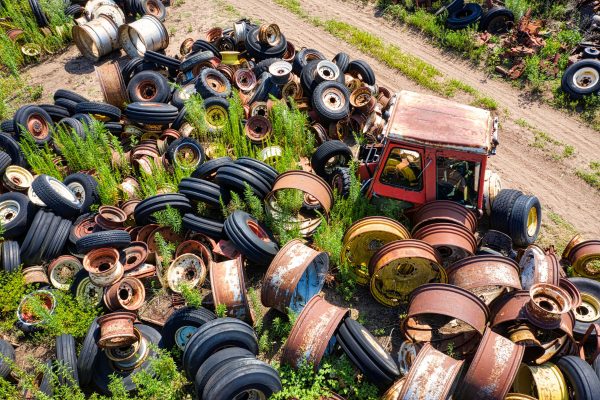
Start with Earth911’s recycling locator, entering “tires” and your ZIP code for comprehensive results. This database includes retailers, municipal sites, and recycling facilities with current information.
State environmental agency websites maintain directories of licensed facilities and upcoming collection events. Search “[your state] tire recycling” for official resources and regulations.
Additional Resources:
Call ahead to confirm acceptance criteria, fees, and hours. Some facilities have specific requirements for tire condition or quantity limits.
Understanding disposal costs helps budget for responsible tire management. Prices vary significantly based on location and disposal method.
| Disposal Method | Typical Cost | Notes |
|---|---|---|
| Retailer with purchase | $2-5 per tire | Often included in new tire price |
| Retailer without purchase | $5-10 per tire | Varies by location |
| Municipal collection | Free-$5 per tire | May have quantity limits |
| Recycling facilities | $50-120 per ton | Bulk pricing available |
| Illegal dumping fines | $500-5,000 per incident | Plus cleanup costs |
Some states offer free disposal days funded through tire taxes. These events typically occur quarterly or annually, accepting unlimited quantities from residents.
Hidden costs of improper disposal include environmental cleanup, health care expenses from vector-borne diseases, and property damage from tire fires. Proper disposal prevents these expensive consequences.
No, tires cannot go in regular trash in most areas. Garbage services specifically exclude tires due to landfill bans and processing difficulties. Attempting to dispose of tires this way may result in refused collection and fines.
Residential limits typically range from 4-8 tires per visit at municipal sites. Retailers usually accept any quantity when purchasing replacements. Larger quantities may require commercial disposal services with appropriate documentation.
Many communities host tire amnesty events funded through environmental programs. Check with your state environmental agency or county waste department for schedules. These events often coincide with Earth Day or community cleanup initiatives.
Collected tires enter sophisticated recycling streams where they’re shredded, separated, and processed into new products. Approximately 43% become fuel, 25% become ground rubber, and the remainder serves various applications from construction to consumer goods.
While tire rubber degrades slightly with each recycling cycle, the materials maintain value through multiple uses. Steel from tires recycles indefinitely without quality loss, demonstrating the importance of proper material separation.
Proper tire disposal represents a critical environmental responsibility that affects air quality, water safety, and public health. With 280 million tires requiring disposal annually, every individual’s choice matters in preventing pollution and conserving resources.
The numerous disposal options available—from convenient retailer programs to specialized recycling facilities—eliminate excuses for improper disposal. Understanding these methods empowers responsible action while supporting the growing circular economy around tire materials.
Take action today by locating your nearest tire recycling option and planning for responsible disposal. Whether through retail partnerships, municipal programs, or direct recycling facility visits, your choice to recycle tires properly contributes to cleaner communities and healthier environments.
The future of tire recycling looks increasingly bright as technology advances and markets expand for recycled materials. By participating in proper disposal today, you support innovations that will make tomorrow’s tire recycling even more efficient and beneficial for our planet.
